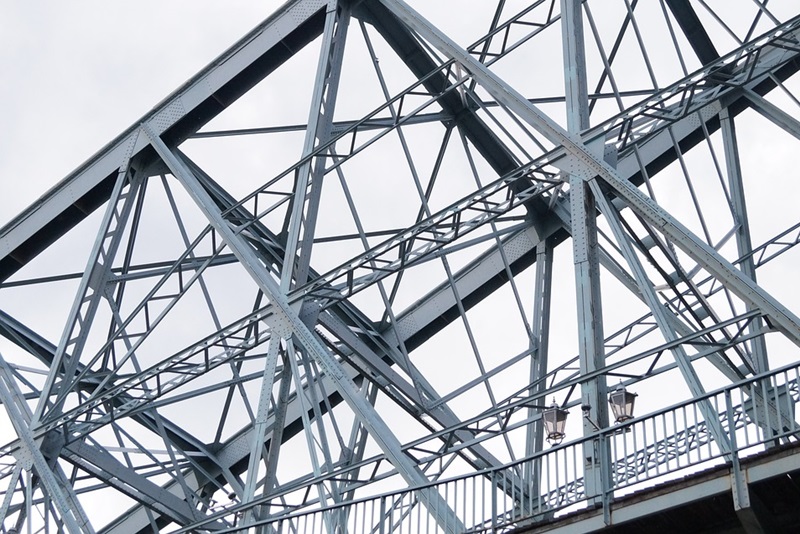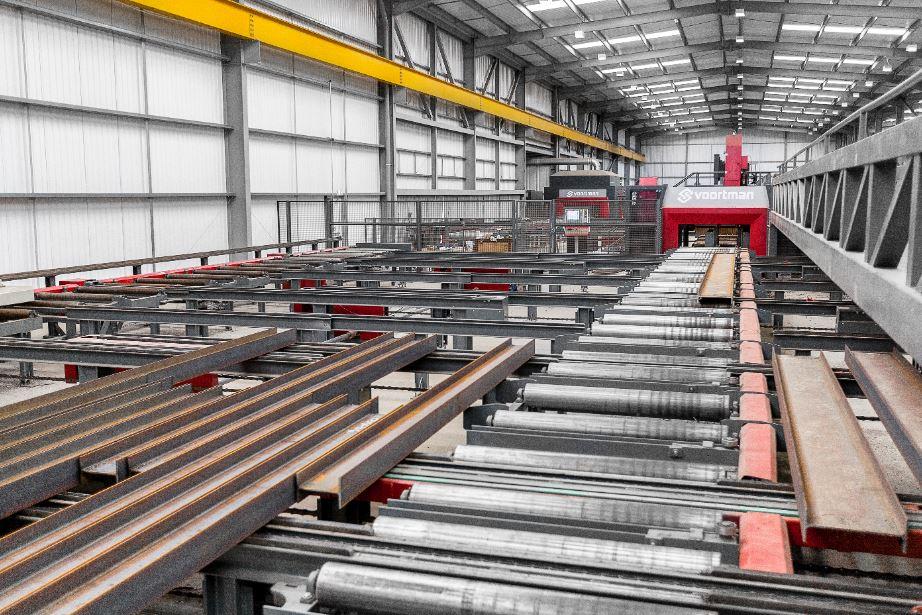Advanced Steel Fabrication Melbourne: Building the Future Today
Advanced Steel Fabrication Melbourne: Building the Future Today
Blog Article
Comprehensive Evaluation of Cutting-Edge Techniques in Steel Construction Sector
As the steel manufacture market remains to progress, the integration of cutting-edge methods has actually ended up being important for remaining competitive and fulfilling the demands of modern-day manufacturing criteria. From laser cutting improvements to the use of robotics and 3D printing in steel production, the landscape of construction strategies is quickly transforming. With each development bringing its very own set of advantages and difficulties, a detailed evaluation of these techniques is critical for business intending to simplify their processes, improve accuracy, and eventually, boost the top quality of their steel construction output. In this dynamic sector where technology plays an essential duty, understanding the nuances of these innovative techniques is not simply an alternative but a requirement for those aiming to advance in the ever-evolving world of steel manufacture.
Laser Reducing Advancements
In the world of steel manufacture, laser cutting improvements have actually reinvented the precision and effectiveness of metal shaping processes. By harnessing the power of concentrated laser beam of lights, makers can now accomplish exceptional levels of accuracy when puncturing different types of metals. This technology enables intricate layouts to be implemented with very little material wastage, making it a cost-effective service for industries calling for high accuracy elements.
One of the vital benefits of laser cutting is its ability to handle a vast array of products, including stainless-steel, light weight aluminum, and carbon steel, effortlessly. The process generates clean, burr-free sides, removing the requirement for added completing actions. The non-contact nature of laser cutting lowers the risk of product contamination, resulting in higher top quality end products.
Furthermore, laser reducing devices can be set to make swift, accurate cuts, significantly minimizing production time contrasted to traditional reducing methods. This speed and precision make laser cutting specifically suitable for automation environments where performance is critical. As modern technology remains to breakthrough, laser cutting is poised to play a progressively vital function in the steel manufacture sector.

CNC Machining Innovations
The development of CNC machining modern technologies has actually ushered in a new period of precision and effectiveness in the steel manufacture sector. Computer System Numerical Control (CNC) devices have reinvented steel manufacture by supplying unequaled accuracy and repeatability in the production procedure. Alpha reo. One of the key developments in CNC machining is the combination of sophisticated software application systems that enable real-time tracking and modifications, resulting in improved efficiency and high quality control
Moreover, the advancement of multi-axis CNC devices has allowed for the construction of complicated steel parts with detailed layouts that were formerly testing to create. These devices can perform a large range of machining operations, including milling, exploration, transforming, and grinding, all with high degrees of precision.
Moreover, the incorporation of automation and robotics in CNC machining has streamlined production procedures, lowered lead times, and reduced the margin of error. This assimilation of innovative innovations not only enhances efficiency yet likewise guarantees consistent top quality across all fabricated steel components. To conclude, CNC machining developments remain to drive advancements in the steel manufacture market, establishing new standards for accuracy and productivity.
Automated Welding Technologies
Automated welding modern technologies have transformed the steel fabrication market, enhancing performance and precision in the welding procedure. These advanced innovations use computer-controlled systems to automate the welding process, causing higher efficiency levels and enhanced weld top quality. One of the vital benefits of automated welding is the ability to do intricate welds with regular accuracy, minimizing the likelihood of errors and revamp.
Robotic welding systems are at the center of automated welding technologies, offering unequaled speed and precision. These systems can take care of a variety of welding jobs, from simple to complex, effortlessly (metal fabrication melbourne). By using innovative steel fixing sensing units and software, robotic welders can adjust to variants in product and joint geometry, ensuring an uniform and trusted weld
Additionally, automated welding innovations boost office safety by reducing the exposure of human welders to harmful fumes and extreme warmth. As the steel manufacture industry remains to advance, including automated welding innovations will be necessary for firms aiming to stay competitive and meet the growing demands for premium welded products.
Robotics Integration in Fabrication
Utilizing robotic systems in fabrication processes has become a pivotal strategy for enhancing performance and accuracy in modern-day production settings. Robotics assimilation in steel manufacture uses a myriad of benefits, including increased performance, boosted quality assurance, and improved precaution. These sophisticated robotic systems are equipped with innovative sensing units and programs capabilities, permitting them to execute complex tasks with a high level of precision and repeatability.
One of the key benefits look at this site of robotics combination in steel fabrication is the capacity to automate repeated tasks, such as material handling, reducing, welding, and assembly procedures. This not just speeds up manufacturing cycles however also lowers the danger of human mistake, bring about higher overall item quality. In addition, robots can run 24/7, considerably boosting manufacturing output and conference limited project target dates.

3D Printing in Steel Production
Having transformed the steel manufacture sector through robotics combination, the blossoming expedition of 3D printing in steel production is poised to additional development the world of modern-day production techniques. 3D printing, also referred to as additive production, uses extraordinary layout freedom and complexity, allowing the development of detailed steel frameworks that were formerly unattainable via traditional production approaches. By using computer-aided style (CAD) software application, makers can precisely manage the layer-by-layer deposition of steel product, causing get rid of boosted functionalities and geometries.
One of the key advantages of 3D printing in steel production is its capacity to lower product waste dramatically. Unlike subtractive production processes where excess product is cut away, 3D printing only utilizes the required amount of steel needed for the last part. This efficiency not only brings about set you back financial savings yet additionally lines up with sustainable manufacturing techniques by lessening environmental impact.
Moreover, 3D printing makes it possible for fast prototyping and customization, enabling the manufacturing of tiny sets of complicated steel components with brief preparations. As the technology proceeds to develop and end up being more accessible, its assimilation into mainstream steel fabrication procedures is expected to drive technology and effectiveness across the sector.
Verdict
Finally, the steel fabrication industry has seen considerable improvements in strategies such as laser cutting, CNC machining, automated welding, robotics integration, and 3D printing. These advanced innovations have reinvented the method steel items are produced, causing boosted precision, cost-effectiveness, and efficiency. Continued investment in these cutting-edge strategies is critical for the sector to remain competitive and meet the demands of modern-day production processes.
As the steel fabrication industry continues to develop, the integration of cutting-edge strategies has actually ended up being important for staying affordable and satisfying the demands of modern-day manufacturing requirements.One of the key benefits of laser cutting is its capability to deal with a wide array of materials, consisting of stainless steel, light weight aluminum, and carbon steel, with ease.Automated welding technologies have actually transformed the steel fabrication sector, improving performance and accuracy in the welding process.Having actually transformed the steel manufacture market via robotics integration, the expanding exploration of 3D printing in steel production is poised to more advancement the world of contemporary production methods.In verdict, the steel construction industry has actually seen substantial developments in techniques such as laser cutting, CNC machining, automated welding, robotics assimilation, and 3D printing.
Report this page